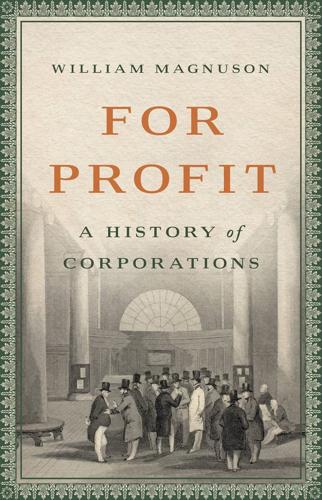
For Profit: A History of Corporations
by
William Magnuson
Published 8 Nov 2022
Ford awaited them there, standing silently by the window “with an air of restless detachment from the business in hand.” The lieutenant handed the reporters a two-page typed statement and began to read from it. The announcement was nothing less than staggering. From that time on, the lieutenant read, all employees at the Ford Motor Company would receive five dollars a day for their work, more than double what they had been making. In addition, Ford was reducing the length of the workday, from the standard nine or ten hours typical in the automotive industry to eight hours. Finally, Ford was hiring: his company planned to bring on several thousand new workers in the coming days.
…
As Ford explained to the reporters after the lieutenant had finished reading, “We believe in making twenty thousand men prosperous and contented rather than follow the plan of making a few slave drivers in our establishment multi-millionaires.”1 When the reporters pressed Ford to clarify precisely who would be entitled to this unprecedented pay raise, Ford calmly explained, “The commonest laborer who sweeps the floor shall receive his five dollars a day.” “But Mr. Ford,” one of the reporters replied in astonishment, “tomorrow morning there will be five thousand men out there in the street with brooms!” Ford, unshaken, answered him, “No, nothing like that.”2 In fact, it was not five thousand men who showed up the next day.
…
Another part of the equation was the morale of Ford workers: attrition rates were shockingly high, and Ford sought a way to encourage loyalty to his company. The competitive landscape of the automobile industry also played a role: while there were many automobile companies in America, the Model T was vastly more popular than any other car on the market, and Ford believed that he could sell as many cars as he could produce. But perhaps the most important reason for the five-dollar day was Henry Ford’s vision of the role of the corporation in society. “The trouble with a great many of us in the business world,” Ford wrote, “is that we are thinking hardest of all about the dollars we want to make. Now that is the wrong idea right at the start.
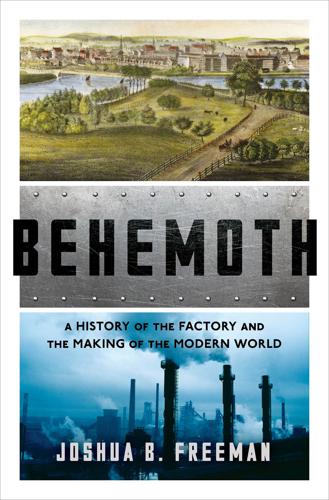
Behemoth: A History of the Factory and the Making of the Modern World
by
Joshua B. Freeman
Published 27 Feb 2018
Just as at the Derby silk mill and the Waltham cotton mill, a new system of production came together in a remarkably short period of time. In less than two years after the first experiments with the assembly line, Ford had installed the system for all phases of Model T production. The factory had become one huge, integrated machine.16 Ford Labor Problems and the Five Dollar Day Some of the productivity gain of the assembly line came from the greater efficiency of material handling. Some came from the increased division of labor. But much of it came from the sheer intensification of work, the elimination of the ability of workers to wander around looking for a part or tool, to slow down while a foreman wasn’t watching, or to store up finished parts to allow resting later on.
…
In Detroit, both the radical Industrial Workers of the World and the new Carriage, Wagon, and Automobile Workers’ Union, affiliated with the more moderate American Federation of Labor, launched organizing drives in the auto industry, leading a few short strikes. Their gains were modest, but their specter haunted employers.23 Ford responded to its labor problems with a program of higher pay and shorter hours, “The Five Dollar Day.” Already, the company had begun instituting policies to retain employees and increase their productivity. In 1913, it introduced a multitiered wage plan that boosted pay as workers’ skills grew and, with longevity, a spur to self-improvement and steady employment.
…
Perhaps surprisingly, given Ford’s later reputation as a union-hating, conservative autocrat, some prominent leftists at first praised the Ford system. In early 1916, after visiting the Highland Park plant, Kate Richards O’Hare, a well-known socialist leader, published two articles in The National Rip-Saw, a mass circulation socialist monthly, praising Henry Ford. O’Hare saw the Five Dollar Day, the Sociological Department, and the Ford English School as advancing the lot of workers (along with Ford’s decision to take the power to fire away from foremen). Using a jarringly racist simile, she wrote that as a result of Ford’s policies “men freeze to a job in the Ford plant like a negro to a fat possum.”
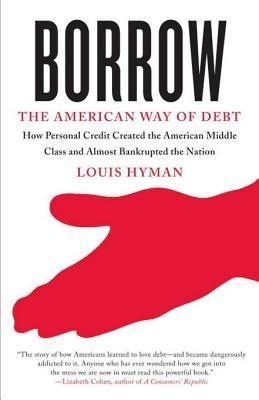
Borrow: The American Way of Debt
by
Louis Hyman
Published 24 Jan 2012
I could not possibly do the same thing day in and day out, but other minds, perhaps I might say to the majority of minds, repetitive operations hold no terrors. In fact, to some types of mind thought is absolutely appalling.”7 Yet even for the majority, the work was intolerable. In the early 1910s, Ford had to rehire his entire workforce three or four times a year because everyone quit. The “five-dollar-day,” started in 1914, when Ford paid his workers $5 a day—twice the market wage—virtually eliminated absenteeism and kept the assembly line running. The higher wage also enabled a new generation of American workers to privilege their consumer identity over their producer identity.8 Wages mattered more than workplace control as long as the work was steady and well paid.
…
Many of those who lost their jobs in the crisis remain unemployed but go uncounted since they have run out of benefits and haven’t looked for work in the last two weeks (which is how the government measures unemployment). Even those who have found work have often had to accept lower wages. The media celebration of McDonald’s National Hiring Day in early 2011 speaks to how far we have drifted from Ford’s five-dollar day. Even for those with jobs, income interruptions remain as dangerous as ever, as unemployment times lengthen. Since health care insurance is tied to employment, illness and job loss can continue to be a double whammy. Compared to Europe, the limited welfare state has pushed Americans to borrow to bridge unemployment and pay for health care.
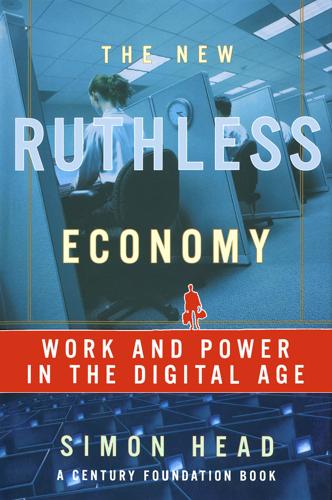
The New Ruthless Economy: Work & Power in the Digital Age
by
Simon Head
Published 14 Aug 2003
Henry Ford, in collaboration with Samuel Crowther, My Life and Work (New York, 1922), quoted in Alfred D. Chandler, Giant Enterprise, Ford, General Motors and the Automobile Industry, Sources and Readings (New York, 1964), p. 39. 30. Meyer, Five Dollar Day, p. 32-35. 31. Ford, My Life and Work, quoted in Meyer, Five Dollar Day, p. 21. 195 NOTES TO CHAPTER 3 32. See, for example, Arnold, Ford Methods and the Ford Shops, pp. 117-27. 33. Ibid., p. 144. 34. Charles Reitell, "Machinery and Its Effect Upon the Workers in the Automobile Industry," Annuls of the American Academy of Political and Social Science 116 (November 1924), quoted in Chandler, Giant Enterprise, p. 183. 35.
…
David Montgomery, Fall of the House of Labor (New York, 1987), p. 247. 21. Chandler, The Visible Hand,?. 278. 22. Hounshell, From the American System, pp. 220, 224. 23. Stephen Meyer, The Five Dollar Day: Labor, Management, and Social Control in the Ford Motor Company, 1908-1921 (Albany, N.Y., 1981), p. 25. 24. Hounshell, From the American System, p. 251. 25. Meyer, Five Dollar Day, pp. 11,20-21. 26. Horace Arnold, Ford Methods and the Ford Shops (New York, 1915), p. 246. Available at the New York Public Library, on microfilm, call number, *XMQ-428. 27. Ibid., p. 174. 28. Ibid., p. 349. 29. Henry Ford, in collaboration with Samuel Crowther, My Life and Work (New York, 1922), quoted in Alfred D.
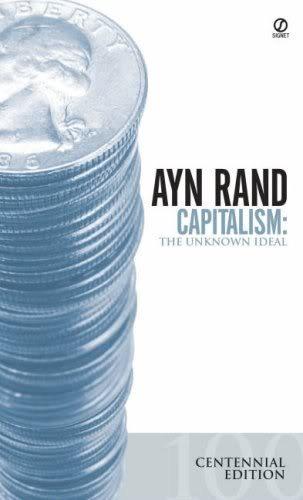
Capitalism: the unknown ideal
by
Ayn Rand
Published 15 Aug 1966
It was the economic self-interest of employers that led them to raise wages and shorten working hours—not the pressure of labor unions. The eight-hour day was established in most American industries long before unions acquired any significant size or economic power. At a time when his competitors were paying their workers between two and three dollars a day, Henry Ford offered five dollars a day, thereby attracting the most efficient labor force in the country, and thus raising his own production and profits. In the 1920’s, when the labor movement in France and Germany was far more dominant than in the United States, the standard of living of the American worker was greatly superior.
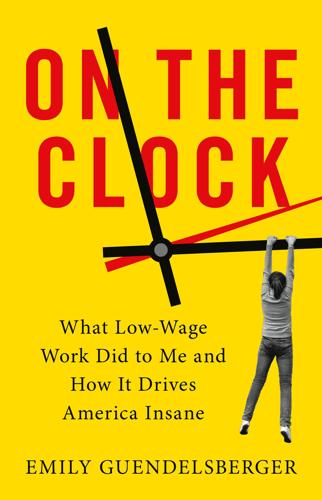
On the Clock: What Low-Wage Work Did to Me and How It Drives America Insane
by
Emily Guendelsberger
Published 15 Jul 2019
When we left Ford, he was trying to solve the horrendous turnover problem caused by his debut of the assembly line in 1913—workers were so miserable that he couldn’t keep the Crystal Palace staffed, and it was crippling production. So in 1914, Ford announced the famous five-dollar day—a raise in wages to nearly twice what you could make elsewhere in Detroit. There’s a lot of mythology about why he did this; anything attributing it to Ford being a nice guy or something is pure bullshit. Know this: Ford had to offer five dollars a day to make it worthwhile to put up with the miserable conditions of the Crystal Palace.* But the markets worked—Ford’s turnover problem vanished. Other factories around Detroit—and soon the rest of the country—had to raise wages to compete for the best workers.

The Age of Surveillance Capitalism
by
Shoshana Zuboff
Published 15 Jan 2019
Henry Ford was clear on this point: “Mass production begins in the perception of a public need.”5 At a time when the Detroit automobile manufacturers were preoccupied with luxury vehicles, Ford stood alone in his recognition of a nation of newly modernizing individuals—farmers, wage earners, and shopkeepers—who had little and wanted much, but at a price they could afford. Their “demand” issued from the same conditions of existence that summoned Ford and his men as they discovered the transformational power of a new logic of standardized, high-volume, low-unit-cost production. Ford’s famous “five-dollar day” was emblematic of a systemic logic of reciprocity. In paying assembly-line workers higher wages than anyone had yet imagined, he recognized that the whole enterprise of mass production rested upon a thriving population of mass consumers. Although the market form and its bosses had many failings and produced many violent facts, its populations of newly modernizing individuals were valued as the necessary sources of customers and employees.
…
This cycle will be broken only when we acknowledge as citizens, as societies, and indeed as a civilization that surveillance capitalists know too much to qualify for freedom. II. After Reciprocity In another decisive break with capitalism’s past, surveillance capitalists abandon the organic reciprocities with people that have long been a mark of capitalism’s endurance and adaptability. Symbolized in the twentieth century by Ford’s five-dollar day, these reciprocities hearken back to Adam Smith’s original insights into the productive social relations of capitalism, in which firms rely on people as employees and customers. Smith argued that price increases had to be balanced with wage increases “so that the labourer may still be able to purchase that quantity of those necessary articles which the state of the demand for labour… requires that he should have.”10 The shareholder-value movement and globalization went a long way toward destroying this centuries-old social contract between capitalism and its communities, substituting formal indifference for reciprocity.
…
Wiebe, The Search for Order: 1877–1920 (New York: Hill and Wang, 1967); John Maynard Keynes, “Economic Possibilities for Our Grandchildren,” in Essays in Persuasion (New York: W. W. Norton, 1930). By 2014, a Standard and Poor’s report concluded that income inequality impedes economic growth and destabilizes the social fabric, a fact that Henry Ford had long ago acknowledged with his five-dollar day. See “How Increasing Income Inequality Is Dampening US Economic Growth, and Possible Ways to Change the Tide,” S&P Capital IQ, Global Credit Portal Report, August 5, 2014, https://www.globalcreditportal.com/ratingsdirect/renderArticle.do?articleId=1351366&SctArtId=255732&from=CM&nsl_code=LIME&sourceObjectId=8741033&sourceRevId=1&fee_ind=N&exp_date=20240804-19:41:13. 44.
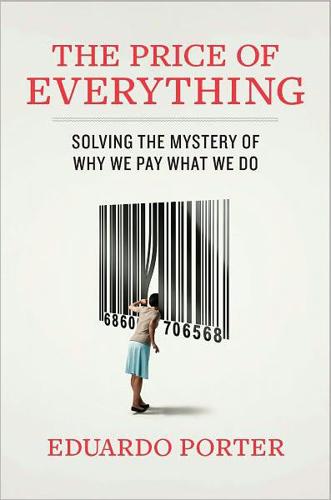
The Price of Everything: And the Hidden Logic of Value
by
Eduardo Porter
Published 4 Jan 2011
Other pioneers tried to deploy pay as an incentive. Facing low worker morale and high turnover on the production line, in January 1914 Henry Ford raised wages to five dollars a day, doubling at a stroke most workers’ pay. It worked, apparently. Job seekers formed a line around Ford’s shop. The journalist O. J. Abell wrote at the time that after the pay hike Ford was churning out 15 percent more cars a day with 14 percent fewer workers. Henry Ford later observed: “The payment of five dollars a day for an eight-hour day was one of the finest cost-cutting moves we ever made.” Gradually, the rest of the car industry followed.

Make Your Own Job: How the Entrepreneurial Work Ethic Exhausted America
by
Erik Baker
Published 13 Jan 2025
The “Sociological Department,” the key exception to Ford’s aversion to overhead spending on “unproductive” headquarters offices, rigorously surveilled workers to ensure that they abided by standards of thrift, hygiene, sobriety, and sexual propriety. Its investigators could disqualify offenders from eligibility for Ford’s famous “five-dollar-day” compensation plan. But if the Sociological Department “routinized” Ford’s charisma in some ways, other lackeys sharpened his personal authority in an increasingly violent direction. As the company expanded with the construction of the River Rouge plant between 1917 and 1928, Ford empowered his deputy Harry Bennett, a former boxer and Navy sailor, to discipline the workforce with methodical brutality.

Aerotropolis
by
John D. Kasarda
and
Greg Lindsay
Published 2 Jan 2009
“Winter Is Here, but Spring Is Coming Too” “The U.S. automotive industry has been pushed to the verge of collapse,” the chairman of American Axle decreed two years ago. Michigan has shed two-thirds of its autoworkers in barely a decade. If Detroit is to have a future, then its residents must give up their malignant dreams of its past, the dream of Henry Ford’s five-dollar-a-day wages and River Rouge, where one hundred thousand men once forged raw coal, sand, and iron into Model Ts. His dream was to build a city on the back of such immense and monotonous efficiency, spurning the “fertile and creative inefficiency” Jane Jacobs recognized as the sign of vitality.

Bricks & Mortals: Ten Great Buildings and the People They Made
by
Tom Wilkinson
Published 21 Jul 2014
The home had become part of the factory and was – just as much as a glass or tyre plant, a steel press or an iron foundry – a site of production, reconceived as a total process, and thus also subject to the improvements of scientific management. But Ford’s imperial troops eventually retreated from the battlefield of the home. In 1921 he gave up on social engineering and shut down the Sociological Department. Continuing demands for unionisation had embittered Ford. He would not countenance bargaining with his employees and felt that his five-dollar munificence was going unappreciated. That year he instituted a speed-up that squeezed the same output from 40 per cent fewer workers, which allowed him to sack 20,000 men, including 75 per cent of his middle managers. As a result, his profits for 1921–2 jumped to $200 million.
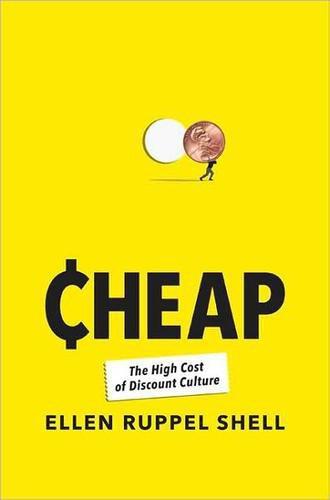
Cheap: The High Cost of Discount Culture
by
Ellen Ruppel Shell
Published 2 Jul 2009
Workers were disqualified if it was determined that the lavish sum of $5 a day would “make of them a menace to society” and “no man was to receive the money who could not use it advisedly.” 21 automakers were forced to follow suit: See, for example, Stephen Meyer III, The Five-Dollar Day: Labor Management and Social Control in the Ford Motor Company, 1908-1921 (Albany: State University of New York Press, 1981). For an excellent online synopsis of this period in Ford history, see “The Assembly Line and the Five Dollar Day” at http://www.michigan.gov/hal/0,1607,7-160-17451__18670__18793-53441—,00.html. 21 five-dollar day; and low prices: Ibid., 263. 21 to $290 in the early 1920s: Steven Babson, Working Detroit, 30. 21 that placed goods and spending at the center of social life: Charles McGovern, Sold American: Consumption and Citizenship, 1890-1945 (Chapel Hill: The University of North Carolina Press, Chapel Hill, 2006). 22 “promise of greater freedom, democracy and quality”: Lizabeth Cohen, A Consumers’ Republic (New York: Knopf, 2003).
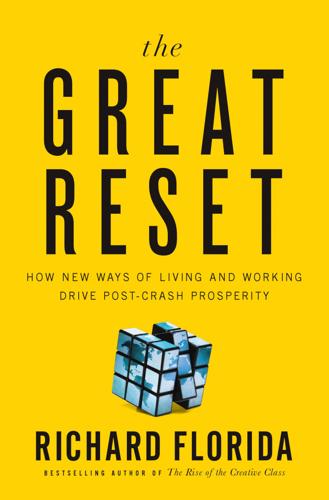
The Great Reset: How the Post-Crash Economy Will Change the Way We Live and Work
by
Richard Florida
Published 22 Apr 2010
Suburbanization was the spatial fix for the industrial age—the geographic expression of that economic model. Henry Ford’s automobiles had been rolling off assembly lines since 1913. After making auto production cheaper and more efficient, Henry Ford realized that a bigger market for his assembly-line cars was needed, so he boosted workers’ wages and introduced the “five-dollar day.” But true Fordism, the combination of mass production and mass consumption, didn’t emerge as a full-blown economic and social model until mass suburbanization—the spatial fix of post–World War II America. Our own collapse, in the early years of the twenty-first century, is the crisis of the latest economic revolution—the rise of an idea-driven knowledge economy that runs more on brains than brawn.
…
By the time Keynes published his classic General Theory of Employment, Interest and Money in 1936, it was clear that government had to spend money to counter economic decline, but it was also clear where that money should be spent: on large-scale infrastructure construction projects such as highways, public works, and even housing. Well before Keynes argued for government spending to stimulate the economy, Henry Ford made the case for a five-dollar working day, so autoworkers could purchase the cars they built. The retail magnate Lincoln Filene—yes, he of Filene’s Basement—said the key challenge facing the economy was to boost consumer demand for all sorts of products. Some even interpreted Keynes as implying that the economy would be better off even if all workers did was dig ditches and fill them up again.

Do Nothing: How to Break Away From Overworking, Overdoing, and Underliving
by
Celeste Headlee
Published 10 Mar 2020
That means people are willing to remain in the office, knowing it won’t affect their ability to get things done at home. Perhaps the most disastrous unintended consequence of a positive intention dates all the way back to Henry Ford in the early twentieth century. On May 1, 1926, Ford Motor Company became one of the first to institute a forty-hour week for its employees. Ford had already created the five-dollar workday in 1914, a decision that had profound impacts on labor everywhere and helped create a new class of consumers: employees with enough disposable income to afford the very vehicles they helped build. Ford is often credited with helping to create the middle class in the United States.

Astounding: John W. Campbell, Isaac Asimov, Robert A. Heinlein, L. Ron Hubbard, and the Golden Age of Science Fiction
by
Alec Nevala-Lee
Published 22 Oct 2018
It inspired endless imitations, and it even influenced Campbell’s decision to major in physics—atomic energy, he felt, was the big scoop of his lifetime, a conviction shared by few of his professors. Yet it didn’t occur to him to write until he was a freshman, and when it did, it was for a reason that the captain of the Skylark might have approved. He wanted a new car. A Model A Ford cost five hundred dollars, and his father informed him, “I owe you a good education; luxuries you get for yourself.” Amazing paid half a cent per word, so Campbell cranked out “Invaders from the Infinite,” writing it as fast as he could because he needed the money. He showed the result to his father, who liked it enough to send it to editor T.
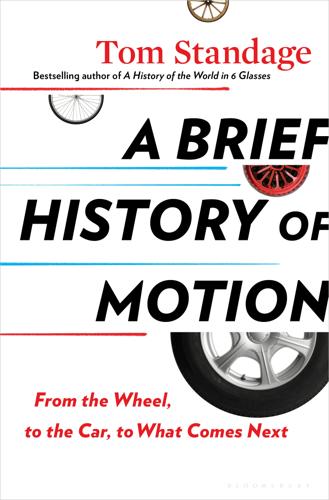
A Brief History of Motion: From the Wheel, to the Car, to What Comes Next
by
Tom Standage
Published 16 Aug 2021
Strange as it may seem, paying higher wages was yet another way of cutting costs and improving efficiency. In 1913, the year before the $5 wage was introduced, 71 percent of Ford’s new hires had left within five days. Paying higher wages reduced employee turnover, and hence the amount of time needed for training. Ford claimed that “the payment of five dollars a day for an eight-hour day was one of the finest cost-cutting moves we ever made.” Average earnings in the United States in 1914 were $335, whereas a Ford employee working five-day weeks for fifty weeks would make $1,250. This also meant that many Ford workers could actually afford the machines they were building, particularly as the price fell.
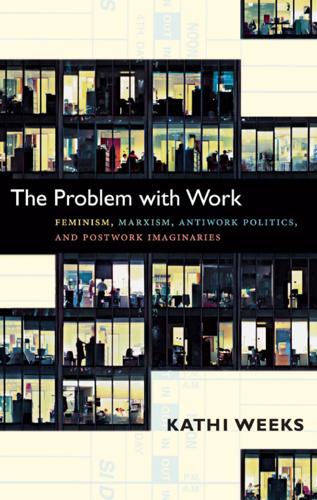
The Problem With Work: Feminism, Marxism, Antiwork Politics, and Postwork Imaginaries
by
Kathi Weeks
Published 8 Sep 2011
Edited and with an introduction by David McLellan. Oxford: Oxford University Press. Massumi, Brian. 1995. “The Autonomy of Affect.” Cultural Critique 31:83–109. Mathers, Andy. 1999. “Euromarch—the Struggle for a Social Europe.” Capital & Class 68:15–19. May, Martha. 1987. “The Historical Problem of the Family Wage: The Ford Motor Company and the Five Dollar Day.” In Families and Work, edited by Naomi Gerstel and Harriet Engel Gross, 111–31. Philadelphia: Temple University Press. McArdle, Louise, et al. 1995. “Total Quality Management and Participation: Employee Empowerment or the Enhancement of Exploitation?” In Making Quality Critical: New Perspectives on Organizational Change, edited by Adrian Wilkinson and Hugh Willmott, 156–72.

Street Smart: The Rise of Cities and the Fall of Cars
by
Samuel I. Schwartz
Published 17 Aug 2015
In 1911, though, Ford moved manufacturing to a new state-of-the-art plant in Highland Park and turned out seventy thousand T’s. It was only the beginning. In 1912, Highland Park made 170,000 cars; in 1913, more than 200,000. In 1914, not only did the factory’s laborers churn out 308,000 cars, but they did so at a salary that Ford had doubled, to the famous “five-dollar day.” By 1915, when Highland Park produced more than half a million Model T’s, the price had dropped under $300 each, which meant that Ford assembly-line workers needed to work only nine weeks or so to earn enough money to buy a brand-new car. And they did. As did millions of others.
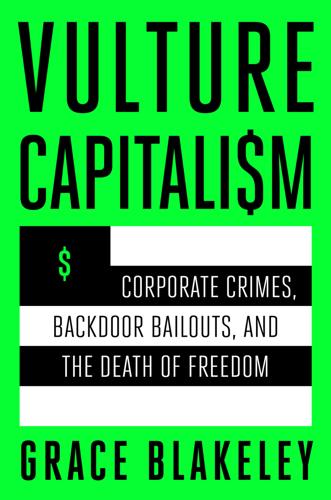
Vulture Capitalism: Corporate Crimes, Backdoor Bailouts, and the Death of Freedom
by
Grace Blakeley
Published 11 Mar 2024
Klein) and, 38, 193, 198 states of emergency and, 57 Suez Canal and, 61–66 discrimination abuse of migrants, 101–3 antisemitism, 19–20, 43–44, 53 in apartheid South Africa, 202–4 homophobic attacks, 103 land/property seizures from indigenous peoples, 186–90, 228, 251 Doctor Who (television series), 109 Donegal International, 207 Donziger, Steven, 195–96 dot-com bubble (1997–2001), 110–11, 120, 133 Dow Chemical, 90, 124 Driver’s Co-Operative (cooperatively owned app), 254 Ducera, 123–24 DuPont, 23, 90–91, 124 Durand, Frederic, 129 Durkan, Jenny, 79 DXC, 45 Dyal, Gordon, 124 Dyalco, 124 E Earnd (app), 154–55 East India Company (EIC), 22, 103–4, 183 Ebbers, Bernard, 119–20 Ecuador, Chevron’s “Amazon Chernobyl” disaster, 194–96, 205 Eeckhout, Jan, 87–88 Egg Baby, 110 Egypt, Suez Canal and, 61–66 Eisenhower, Dwight, 188–89 electoral systems, 259–61 campaign finance reform, 259 lobbying by corporations, 105–6, 140, 141–42, 151, 159, 259 political donations/contributions and, 43–44, 80, 140, 141, 259 working-class candidates and, 260–61 Elizabeth I (Queen of England), 103 Elizabeth II (Queen of England), 114 El Salvador, gold mining prevention in, 197 Emissions Trading System (European Union), 69 empire planning, 173–211 “banana republics” and, 186–93 China, Belt and Road policy, 171–72, 182–83 comparative advantage (Ricardo) and, 180–81 dependency theories, 184–86 fossil-fuel industry and, 194–97 free trade policies and, 181–82 imperialism and, 173–81, 183–85 international development in, 180–81 investor-state dispute settlement (ISDS), 194–98 nature of empire and, 177–79 shock therapy, 38, 193, 198, 200–201 structural adjustment programs (SAPs), 198–202 US colonialism and, 173–79, 209–10 vulture capitalism, 202–11 employer-employee relationship, 83–85 Engels, Friedrich, 121 Enron, 55, 119 entrepreneurialism, xv–xvi, 33, 41, 85, 92, 116–18, 167 environmental issues, see climate breakdown Estonia, Your Priorities platform, 236 Ethiopian Airlines Flight 302 (2019), 3–4, 219 Ethyl Corp., 197 European Central Bank (ECB), 46, 210 European Commission, 87 European Union (EU) Emissions Trading System (ETS), 69 enforcement of competition law, 87 “green” stimulus packages, 69 labor movement and, 78 United Kingdom membership in, 154 Evergrande Group (China) implosion, 167–69, 171 Everything Store, The (Stone), 80 Export-Import Bank (EXIM), 243 ExxonMobil, 64, 139–41 F Facebook/Meta, vii, 94, 106 Fannie Mae, 50 Fanon, Frantz, 177 Ferreras, Isabelle, 83 feudalism, 12–13, 266, 269–71 Finance Capital (Kautsky), 121–22 financial crisis of 1630s (tulip bubble), 126 financial crisis of 1987 (stock market crash), 126–27 financial crisis of 1997 (Asian crisis), 51, 200 financial crisis of 2008 (subprime bubble), xiv, 126 American International Group (AIG) bailout and, 48–53, 136 bond ratings agencies and, 50 as crisis of regulatory capture, 32 Evergrande (China) implosion, 167–69, 171 Ford Motor Company and, 29–30 globalization of finance and, 50–51, 209–10 Iceland, Better Reykjavik participatory budgeting program, 235–36, 258–59 international finance system and, 207, 209–10, see also international finance system lack of prosecutions following, 38–39, 52, 131–32 McKinsey & Company and, 54–55 mortgage-backed securities and, 41, 48–50, 52, 54, 106, 127, 128–30 Occupy movement, 249–50 origins in the US, 209–10 predictions of, 114–15, 117–18 private debt creation and, 117–18 quantitative easing (QE) and, 127–28, 129, 136 Strike Debt campaign/Rolling Jubilee, 249–50 Troubled Asset Relief Program (TARP, 2008), 29, 49, 53 financial institutions, see central banks; international finance system Fink, Larry, 69, 132–37, 142 First Boston, 133 Flores, Fernando, 244–45 Florida, Pulse nightclub shooting (2016), 103 Floyd, George, 101 Flying Blind (Robison), 6 Foccart, Jacques, 177 food agrochemical and seed industry, 90–91, 123–24 land degradation and, 68 pesticides/herbicides, 68, 90–91, 124 Ford, Henry, 19–22, 26, 28, 75, 160 Ford, Henry, II, 23, 26, 27, 28 Ford Motor Company, 19–30, 75, 86, 87, 96 corporate welfare and, 25, 29–30 Five-Dollar Day, 21, 26 Fordist production approach, 19–24 Fordlândia, 22–23, 186 Ford Motor Credit Company (FMCC), 28–29 labor movements at, 19–22, 26–29, 31, 75 shareholder distributions, 28, 29–30, 31 fossil-fuel industry, 62–64, 66, 69, 139–43, 194–97, 205, 251 Foucault, Michel, 105, 165, 170 four-day workweek proposal, 248, 253 fractional reserve banking, 114–18 France COVID-19 aid to corporations, 46 imperialism of, 177 Franco, Francisco, 229 Freddie Mac, 50 Freedom Farms Cooperative (Mississippi), 237 free-market capitalism, ix, 11–14, 15–17, 30, 36–39, 97–98, 137, 221, 268–70 Friedman, Milton, 34, 150 G G4S (Government 4 Sale), 46, 101–3, 104 Gabon, 177 Galbraith, J.

No Such Thing as a Free Gift: The Gates Foundation and the Price of Philanthropy
by
Linsey McGoey
Published 14 Apr 2015
The Ford Foundation wasn’t set up until 1936, after Ford spent decades building his wealth through business practices and personal politics even more controversial than those of Carnegie and Rockefeller. Both an early supporter of high wages and a fierce opponent of labour unions, Ford was something of a paradox. He stunned fellow industrialists in 1914 by introducing a wage in his industries of five dollars a day, for eight hours’ work, at a time when the average wage was two and a half dollars for ten hours’ work. In an interview for World’s Work, Ford explained that a shorter week and higher wages led to more productive employees. The value of permitting more leisure time was, Ford asserted, a ‘cold business fact’.

Care: The Highest Stage of Capitalism
by
Premilla Nadasen
Published 10 Oct 2023
The widening class disparities and economic insecurity that stemmed from capitalism’s unfettered economic expansion seemed to be a ticking time bomb. In order to stave this off, beginning in the 1920s, industrialists experimented with supporting and managing their workers’ labor of social reproduction by piloting programs that historians have named “welfare capitalism.” Henry Ford, for example, paid workers an unprecedented five dollars a day, provided home mortgages, and opened a social service division in order to assimilate and discipline workers—to teach them how to save money, show up to work on time, and avoid excessive alcohol use. Ford offered concessions to American-born workers in part because he wanted a more stable workforce and a consumer market.
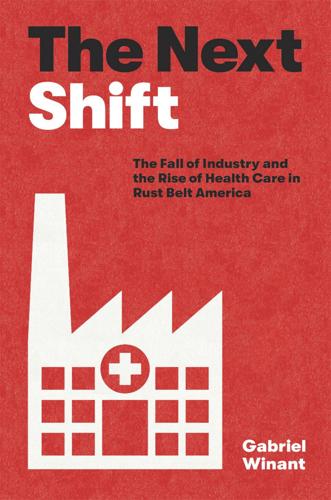
The Next Shift: The Fall of Industry and the Rise of Health Care in Rust Belt America
by
Gabriel Winant
Published 23 Mar 2021
Evelyn Nakano Glenn, Grace Chang, and Linda Rennie Forcey (New York: Routledge, 1994), 45–66; Premilla Nadasen, “Expanding the Boundaries of the Women’s Movement: Black Feminism and the Struggle for Welfare Rights,” Feminist Studies 28, no. 2 (Summer 2002), 270–301. 31. See Martha May, “The Historical Problem of the Family Wage: The Ford Motor Company and the Five-Dollar Day,” Feminist Studies 8, no. 2 (Summer 1982), 399–424; Elizabeth Faue, Community of Suffering and Struggle: Women, Men, and the Labor Movement in Minneapolis, 1915–1945 (Chapel Hill: University of North Carolina Press, 1991); Dorothy Sue Cobble, The Other Women’s Movement: Workplace Justice and Social Rights in Modern America (Princeton, NJ: Princeton University Press, 2004); Tithi Bhattacharya, ed., Social Reproduction Theory: Remapping Class, Recentering Oppression (London: Pluto, 2017).

The Arsenal of Democracy: FDR, Detroit, and an Epic Quest to Arm an America at War
by
A. J. Baime
Published 2 Jun 2014
. [>] “Fancy a jungle of wheels”: Julian Street and Wallace Morgan, Abroad at Home (New York: The Century Company, 1914), p. 93. [>] “The Ford Motor Company”: Brinkley, Wheels for the World, p. 162. [>] “He’s crazy, isn’t he?”: Collier and Horowitz, The Fords, p. 49. [>] “Biblical principles”: Ibid. [>] “see to it that he’s”: Robert Lacey, Ford: The Men and the Machine (Boston: Little, Brown, 1986), pp. 222–23. [>] “Five dollars a day was”: Brinkley, Wheels for the World, p. 171. [>] “We are going to make it”: Beasley, Knudsen, p. 71. [>] “the Zeus of American mythology”: Reynold M. Wik, Henry Ford and Grass Roots America (Ann Arbor: University of Michigan Press, 1972), p. 6. [>] ranked Henry Ford third: Charles Higham, Trading with the Enemy (Lincoln, NE: Authors Guild Backinprint.com, 2007), p. 154. [>] “The machine is the new messiah”: Henry Ford, “Machinery, the New Messiah,” The Forum 79, March 1928, pp. 363–64. [>] “Machinery is accomplishing”: Henry Ford and Ray Leone Faurote, My Philosophy of Industry (New York: Coward-McCann, 1929), pp. 18–19. 3.
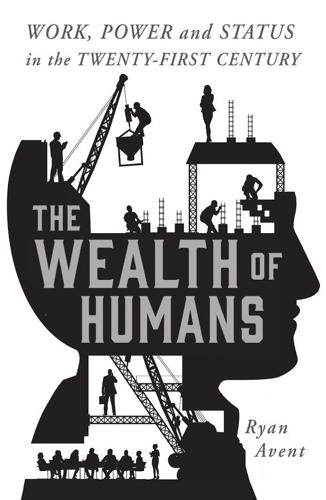
The Wealth of Humans: Work, Power, and Status in the Twenty-First Century
by
Ryan Avent
Published 20 Sep 2016
Dabla-Norris, Era, Kochhar, Kalpana, Suphaphiphat, Nujin, Ricka, Frantisek, and Tsounta, Evridiki, ‘Causes and Consequences of Income Inequality: A Global Perspective’, IMF Staff Discussion Note, 1 June 2015. 4. Raff, Daniel, and Summers, Lawrence, ‘Did Henry Ford Pay Efficiency Wages?’, Journal of Labor Economics, Vol. 5, No. 4, Pt 2, October 1987. 5. Meyer, III, Stephen, The Five Dollar Day: Labor Management and Social Control in the Ford Motor Company, 1908-1921 (New York, NY: SUNY Press, 1981), quoted in ibid. 6. Hall, Jonathan, and Krueger, Alan, ‘An Analysis of the Labor Market for Uber’s Driver-Partners in the United States’, Working Paper, Princeton University, Industrial Relations Section, January 2015. 7.

Reinventing Capitalism in the Age of Big Data
by
Viktor Mayer-Schönberger
and
Thomas Ramge
Published 27 Feb 2018
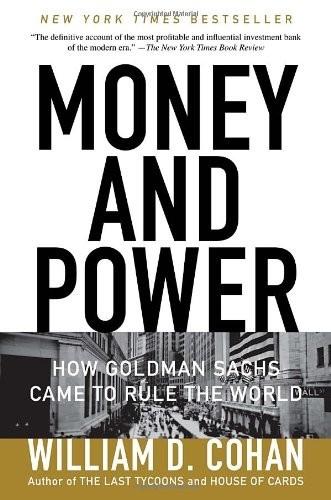
Money and Power: How Goldman Sachs Came to Rule the World
by
William D. Cohan
Published 11 Apr 2011
“I always thought that ours was the best-furnished porch in Montclair,” Whitehead quipped. During the Depression, the Whiteheads survived on macaroni and cheese and codfish cakes, recycled clothing, Amos ’n’ Andy, Jack Armstrong, The All-American Boy, and Roosevelt’s fireside chats. The family was able to spring for a new 1934 Model A Ford—cost: five hundred dollars. Like so many of his generation, living through the Depression seared in Whitehead an aversion to risk and borrowing money. “I don’t even like credit cards!” he proclaimed. But he did not think of his family as poor “probably because we were no worse off than anyone else I knew.” Whitehead seemed to have a fairly normal childhood, collecting acorns, Indian-head pennies, and stamps.

The Origins of the Urban Crisis
by
Sugrue, Thomas J.
On Catholic women, gender, and family ideology in the postwar era, see Kathryn Johnson, “Creating an American Catholic Identity: The Politics of Family Life in Postwar American Culture” (paper presented to the American Studies Association Annual Meeting, Pittsburgh, November 1995), and Johnson’s important dissertation in progress at the University of Pennsylvania. On the family wage, see Martha May, “The Historical Problem of the Family Wage: The Ford Motor Company and the Five Dollar Day,” Feminist Studies 8 (1982): 399–424; Elizabeth Faue, Community of Suffering and Struggle (Chapel Hill: University of North Carolina Press, 1991). On female labor force participation and changing ideas about women and work, see the important article by Susan M. Hartmann, “Women’s Work and the Domestic Ideal in the Early Cold War Years,” in Not June Cleaver: Women and Gender in Postwar America, ed.

The One Device: The Secret History of the iPhone
by
Brian Merchant
Published 19 Jun 2017
It is reportedly building a fleet of so-called Foxbots, iPhone-building robots that might eventually replace human laborers altogether. All of this serves to keep its employees’ wages—which are higher than other factory workers’, it must be noted—low. It’s a pretty astonishing sign of how far the assembly line has evolved. Henry Ford famously began paying his workers five dollars a day in 1914, a high wage for the era, saying he thought they ought to be able to afford the Model Ts they were making. (That wasn’t the whole story, of course—before he increased wages, he had a major attrition problem. The annual turnover rate was 370 percent because people hated the boring, repetitive work.)

SAM: One Robot, a Dozen Engineers, and the Race to Revolutionize the Way We Build
by
Jonathan Waldman
Published 7 Jan 2020

Slouching Towards Utopia: An Economic History of the Twentieth Century
by
J. Bradford Delong
Published 6 Apr 2020

The Relentless Revolution: A History of Capitalism
by
Joyce Appleby
Published 22 Dec 2009
His mass producers at one factory spoke fifty different languages, but it didn’t matter, because they needed to know how to do only one task.43 Ford’s success can be measured by the fact that his famous assembly line, when perfected, could turn out a car in ninety-eight minutes! The Model T made its appearance in 1908; it was elegant in design and engineering and available in any color, Ford announced, “as long as it was black.” More important, most middle-class Americans could afford one, including Ford’s workers, whom he started paying five dollars a day in 1914. His goal was for his men to earn wages high enough for them to buy what they produced. And buy they did. The scientific management of labor had already attracted the attention of Frederick Winslow Taylor, who carefully observed men working in the steel industry in the 1880s and 1890s.

Going Infinite: The Rise and Fall of a New Tycoon
by
Michael Lewis
Published 2 Oct 2023
In the ensuing weeks, Sam gave Anna Wintour’s people no reason to think he was doing anything but threading needles. FTX’s marketing people sounded out Louis Vuitton about creating a red-carpet-worthy version of Sam’s T-shirt and cargo shorts look. Other FTX employees, perhaps hedging the company’s bets, paid Tom Ford to design a more conventional outfit, complete with sixty-five-thousand-dollar cuff links. Behind the scenes, wheels spun and gears ground but Sam himself never really engaged with the process, or even said what was on his mind. He viewed the entire list of fashion plays dreamed up by the FTX marketing people with suspicion. “I have no idea which of these things matters and which doesn’t,” he said.

Power and Progress: Our Thousand-Year Struggle Over Technology and Prosperity
by
Daron Acemoglu
and
Simon Johnson
Published 15 May 2023
Today, the owners of baseball teams still do well, but they are forced to share much more of their rents with the athletes. Employers may also share rents to cultivate goodwill and motivate employees to work harder, or because prevailing social norms convince them to do so. On January 5, 1914, Henry Ford famously introduced a minimum pay of five dollars per day to reduce absenteeism, to improve retention of workers, and presumably to reduce the risk of strikes. Many employers have since tried something similar, particularly when it is hard to hire and retain people or when motivating employees turns out to be critical for corporate success.

Dreaming in Code: Two Dozen Programmers, Three Years, 4,732 Bugs, and One Quest for Transcendent Software
by
Scott Rosenberg
Published 2 Jan 2006
There’s McDonald’s “Innovate”—$170 million down the drain in a failed effort to turn the entire fast-food chain into a “real-time network” that would give execs instantaneous reporting on the precise status of each individual batch of French fries. And there’s Ford’s “Everest” procurement system, a five-year, several-hundred-million-dollar black hole. It’s tempting to view the multitude of monster projects gone bad as anomalies, excrescences of corporate and government bureaucracies run amok. But you will find similar tales of woe emerging from software projects big and small, public and private, old and new.

Business Adventures: Twelve Classic Tales From the World of Wall Street
by
John Brooks
Published 6 Jul 2014
Breech, the executive vice-president, that studies be undertaken concerning the wisdom of putting on the market a new and wholly different medium-priced car. The studies were undertaken. There appeared to be good reason for them. It was a well-known practice at the time for low-income owners of Fords, Plymouths, and Chevrolets to turn in their symbols of inferior caste as soon as their earnings rose above five thousand dollars a year, and “trade up” to a medium-priced car. From Ford’s point of view, this would have been all well and good except that, for some reason, Ford owners usually traded up not to Mercury, the company’s only medium-priced car, but to one or another of the medium-priced cars put out by its big rivals—Oldsmobile, Buick, and Pontiac, among the General Motors products, and, to a lesser extent, Dodge and De Soto, the Chrysler candidates.

The Technology Trap: Capital, Labor, and Power in the Age of Automation
by
Carl Benedikt Frey
Published 17 Jun 2019
At the Ford Motor Company, the cost of constantly training new workers, as many others left the company for better jobs elsewhere, prompted action. To keep its workers, the company introduced the five-dollar-a-day wage, effectively doubling the wages of the employees working in its factories. Since Ford accounted for almost half of the American production of automobiles, increasing the wage to five dollars a day can justly be regarded as “the most dramatic event in the history of wages.”30 In addition to raising wages, Ford also introduced a new welfare program for its workers, and companies like Procter and Gamble, General Electric, and Goodyear Tire soon followed suit, institutionalizing similar programs that returned some of the productivity gains to employees in terms of better wages, medical services, pension plans, and so forth.

The Wizard of Menlo Park: How Thomas Alva Edison Invented the Modern World
by
Randall E. Stross
Published 13 Mar 2007
In January 1914, Ford announced that he planned within the year to begin manufacturing an electric car using a lightweight battery that Edison had been preparing for some time. Ford told reporters, “I think Mr. Edison is the greatest man in the world and I guess everyone does.” Ford, who had also just announced the adoption of the “Five-Dollar Day,” effectively doubling the wages of virtually all of his workers, was at this historical moment the single most influential businessperson in the country. The New York newspapers, however, had not realized it. When they reported on the plans for the Ford-Edison electric car, they mostly paid compliments to Edison.
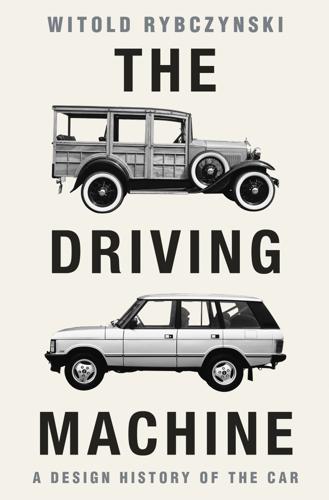
The Driving Machine: A Design History of the Car
by
Witold Rybczynski
Published 8 Oct 2024
But Ford was the first to apply the idea to automobile manufacturing when, five years after he built his factory, he had the novel idea of moving partially completed car bodies from workstation to workstation. This single change eventually reduced the assembly time of a car from 12.5 man-hours to a remarkable 1.5 man-hours. By 1921, Ford had lowered the selling price of the Model T to $325, the equivalent of four months of average earnings, about five thousand present-day dollars. That made the car forty percent cheaper than its closest competitor. The Ford Motor Company built factories in Canada and England, and assembly plants in half a dozen European countries as well as Mexico, Brazil, Argentina, and Japan.
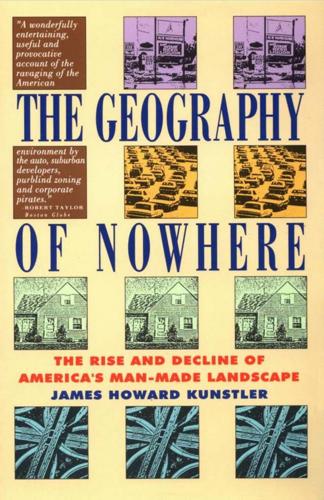
The Geography of Nowhere: The Rise and Decline of America's Man-Made Landscape
by
James Howard Kunstler
Published 31 May 1993
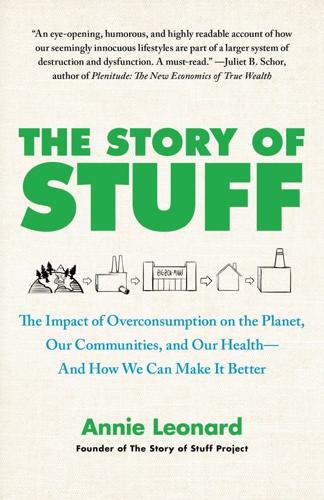
The Story of Stuff: The Impact of Overconsumption on the Planet, Our Communities, and Our Health-And How We Can Make It Better
by
Annie Leonard
Published 22 Feb 2011
Ford’s theories of mass production have been so influential that they are widely referred to as Fordism, but what many people don’t realize is that the assembly line piece of it is only half of the story. As much as it involved increasing mass production, Fordism was equally concerned with facilitating mass consumption because, as Ford realized, producers can’t keep churning out all this Stuff unless someone is going to buy it. In 1914, Ford took the unprecedented step of voluntarily doubling his workers’ salaries to five dollars a day (equivalent to just over one hundred dollars a day in 2008 dollars). He also decreased the workday from nine to eight hours. His reward: lower worker turnover, the ability to run three shifts a day instead of two, and greater car sales as the workers themselves joined his customer base.

Affluenza: The All-Consuming Epidemic
by
John de Graaf
,
David Wann
,
Thomas H Naylor
and
David Horsey
Published 1 Jan 2001
Products were made to last only a short time so that they would have to be replaced frequently (adding to sales), or they were continually upgraded, more commonly in style than in quality. It was an idea that began long before World War II with Gillette disposable razors, and it soon took on a larger life. Henry Ford, who helped start the ’20s consumer boom by paying his workers a then-fantastic five dollars a day, was a bit of a conservative about style, once promising that consumers could have one of his famous Model T’s in any color as long as it was black. But just before the Great Depression, General Motors introduced the idea of the annual model change.

In the Age of the Smart Machine
by
Shoshana Zuboff
Published 14 Apr 1988

The Meritocracy Trap: How America's Foundational Myth Feeds Inequality, Dismantles the Middle Class, and Devours the Elite
by
Daniel Markovits
Published 14 Sep 2019
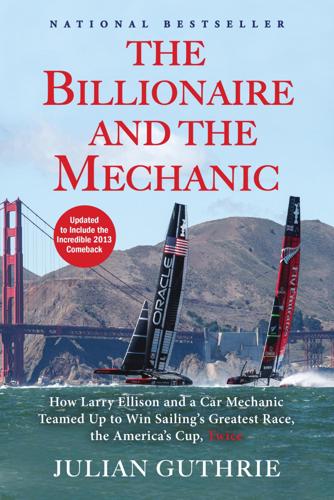
The Billionaire and the Mechanic: How Larry Ellison and a Car Mechanic Teamed Up to Win Sailing's Greatest Race, the Americas Cup, Twice
by
Julian Guthrie
Published 31 Mar 2014
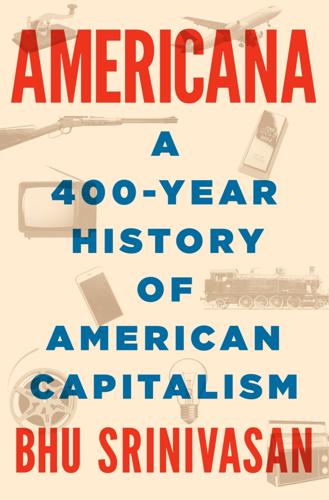
Americana: A 400-Year History of American Capitalism
by
Bhu Srinivasan
Published 25 Sep 2017
Refusing to make anything for any foreign military, as it appeared he was doing, Ford pulled out. Knudsen implored Ford to keep his word, but he made a mistake by invoking Roosevelt’s pleasure at Ford’s initial consent. Knudsen left empty-handed and enraged. The New Deal had been especially tough for Ford to weather. Once hailed universally as the friend of labor with his five-dollar day, he had found himself in a losing battle with unions throughout the 1930s. He blamed Roosevelt’s union policies for severing his direct connection to his labor force. Now his life’s work, his plants and method of manufacture, were being summoned by the government for a cause he didn’t believe in.

Americana
by
Bhu Srinivasan
Refusing to make anything for any foreign military, as it appeared he was doing, Ford pulled out. Knudsen implored Ford to keep his word, but he made a mistake by invoking Roosevelt’s pleasure at Ford’s initial consent. Knudsen left empty-handed and enraged. The New Deal had been especially tough for Ford to weather. Once hailed universally as the friend of labor with his five-dollar day, he had found himself in a losing battle with unions throughout the 1930s. He blamed Roosevelt’s union policies for severing his direct connection to his labor force. Now his life’s work, his plants and method of manufacture, were being summoned by the government for a cause he didn’t believe in.
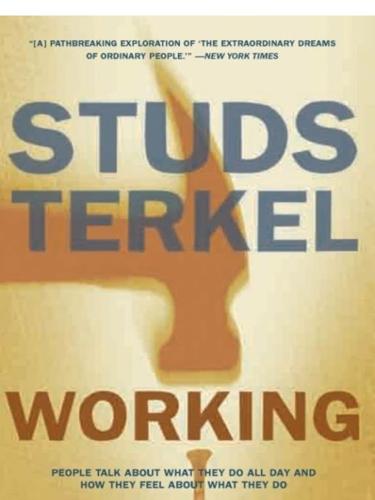
Working: People Talk About What They Do All Day and How They Feel About What They Do
by
Studs Terkel
Published 1 Jan 1974

Strategy: A History
by
Lawrence Freedman
Published 31 Oct 2013